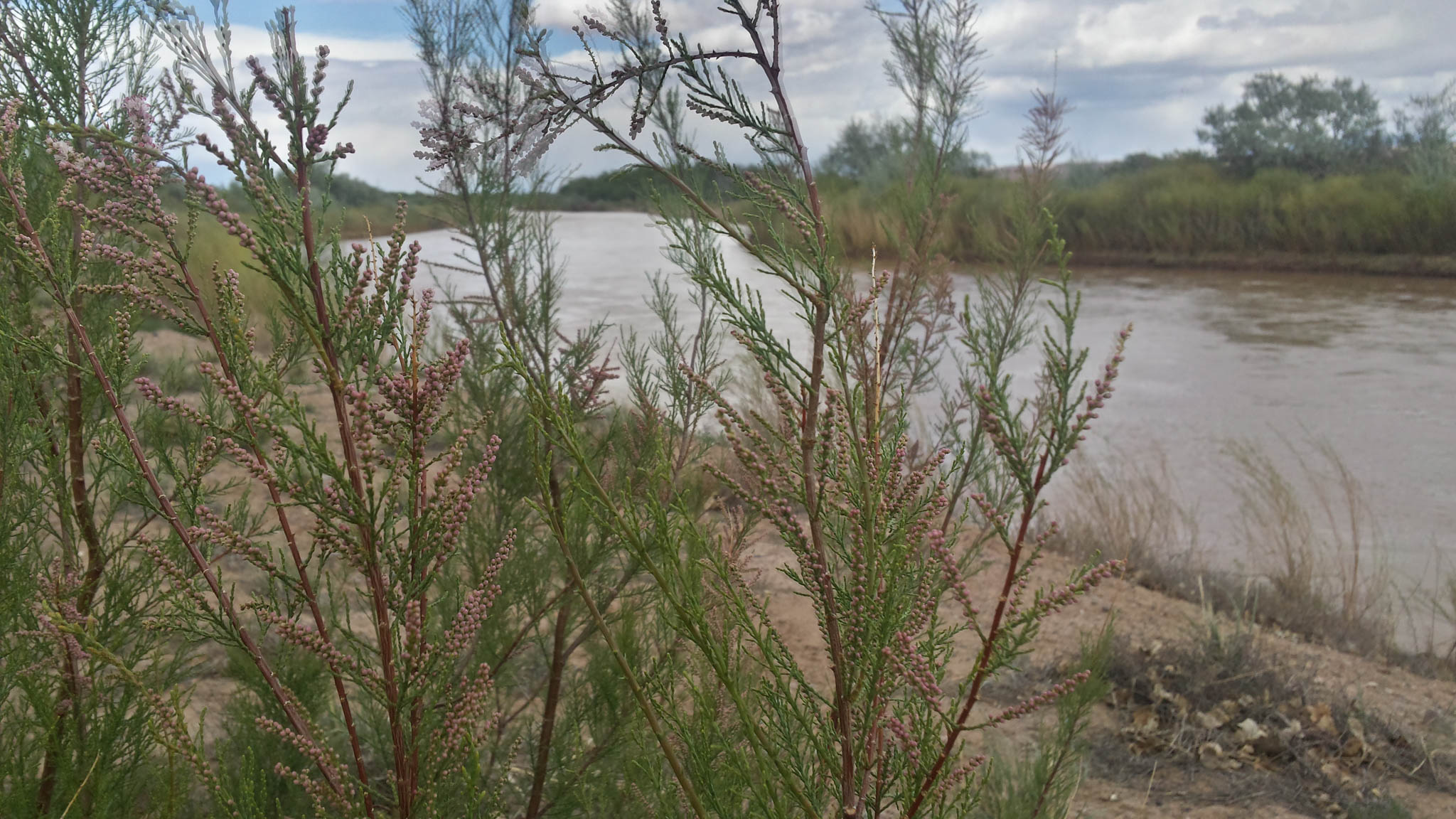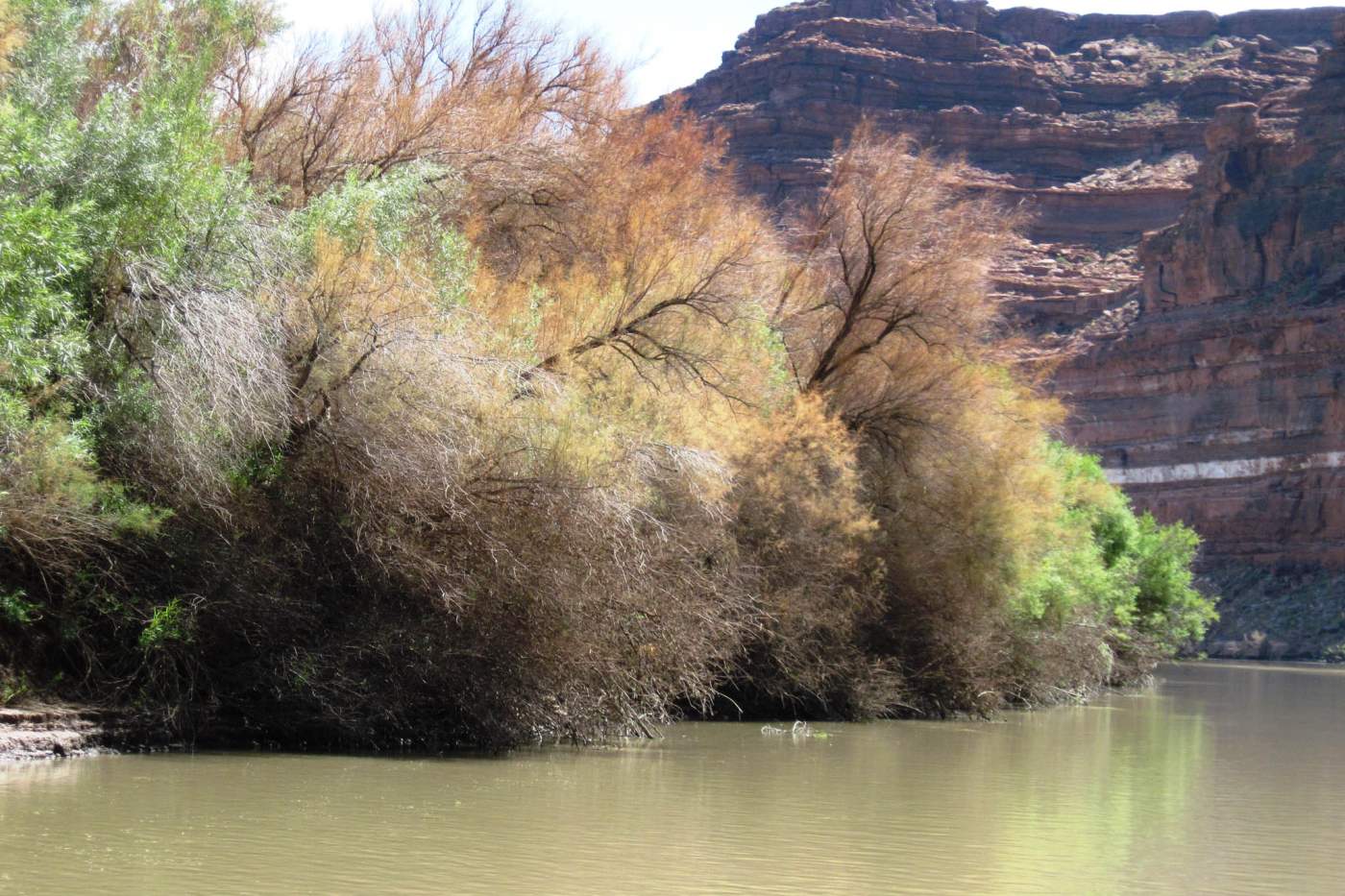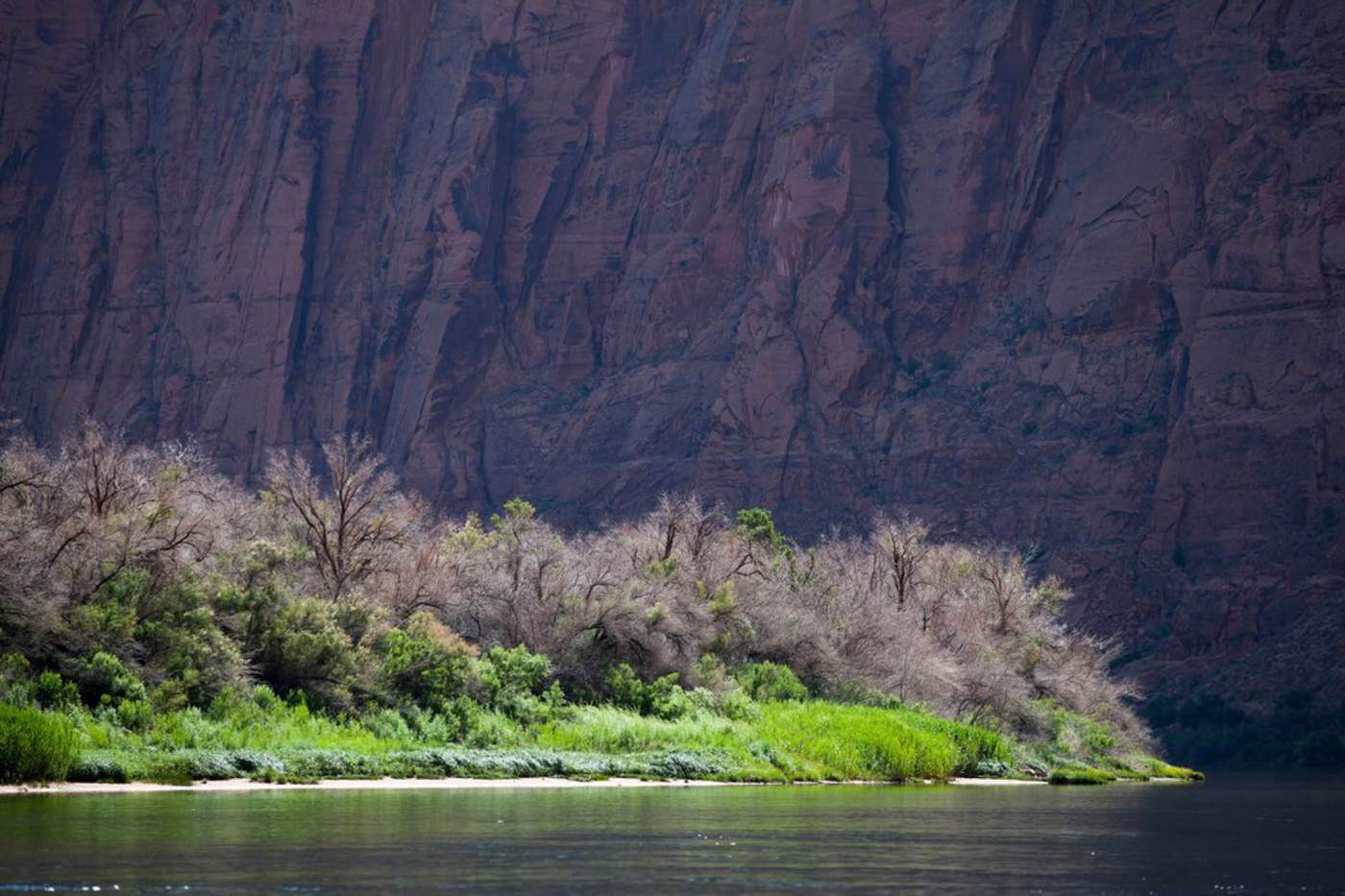Impacts of Tamarisk:
Tamarisk, also known as Saltcedar, is a small multi-stemmed tree with origins in eastern Asia, northern Africa, and southern Europe. They can reach up to 20ft tall and form very dense thickets. There are 5 species and hybrids between species, but are lumped together as Tamarix sp. for management purposes.
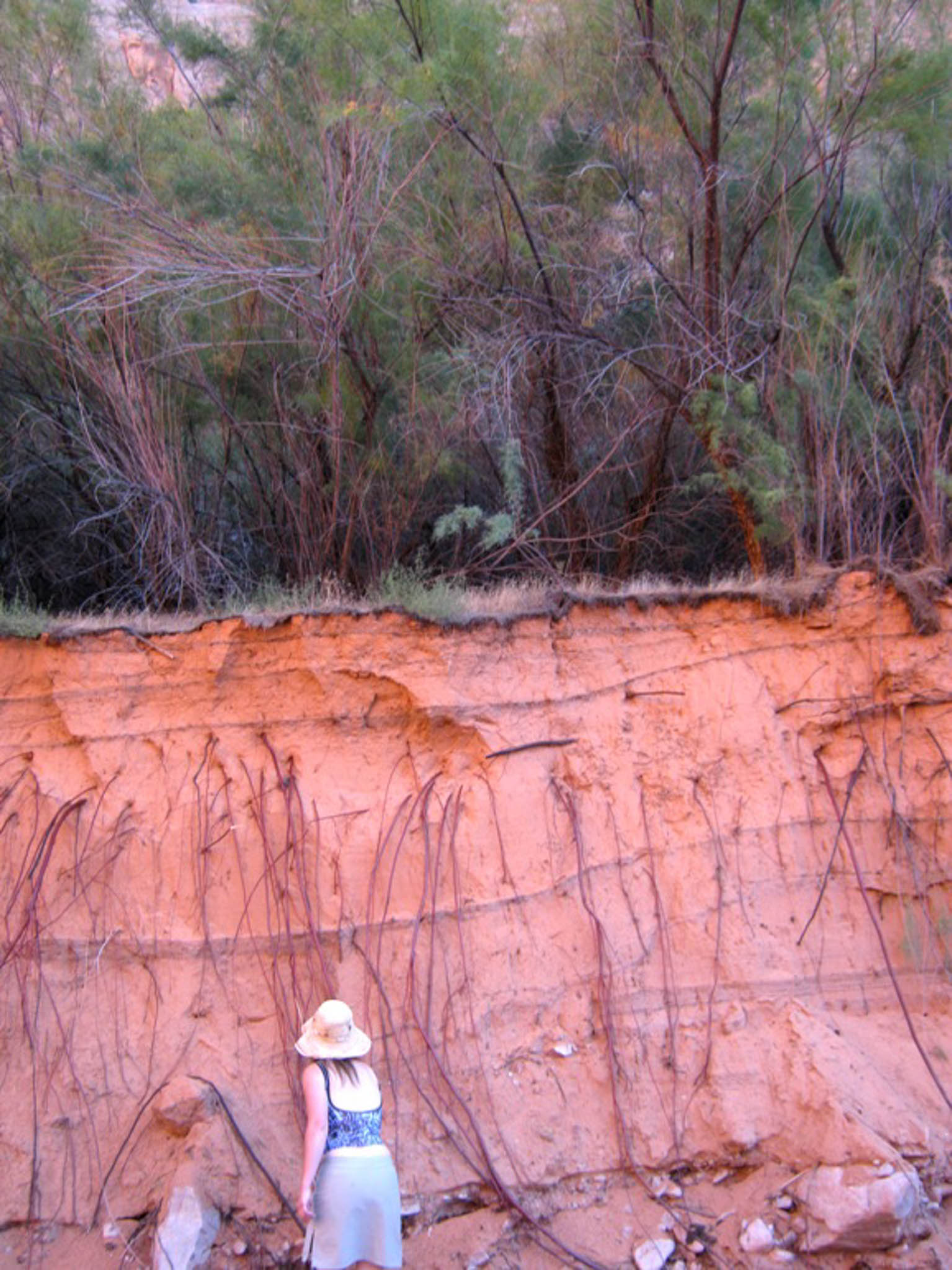
The impacts of tamarisk on the landscape include:
Accessing more water through deep taproots
- Tamarisk roots reach further and deeper compared to native trees and shrubs
- This allows tamarisk to persist and thrive in prolonged drought
Using high rates of water
- Tamarisk use water at a high rate for growth
- This high water use in combination with the deep-reaching taproots has the effect of drying up the stream or floodplain
Crowding out native vegetation
- Tamarisk reproduces by seed and by cuttings very quickly, which results in dense thickets
- Tamarisk thickets block the sun from native species that would otherwise be germinating and growing
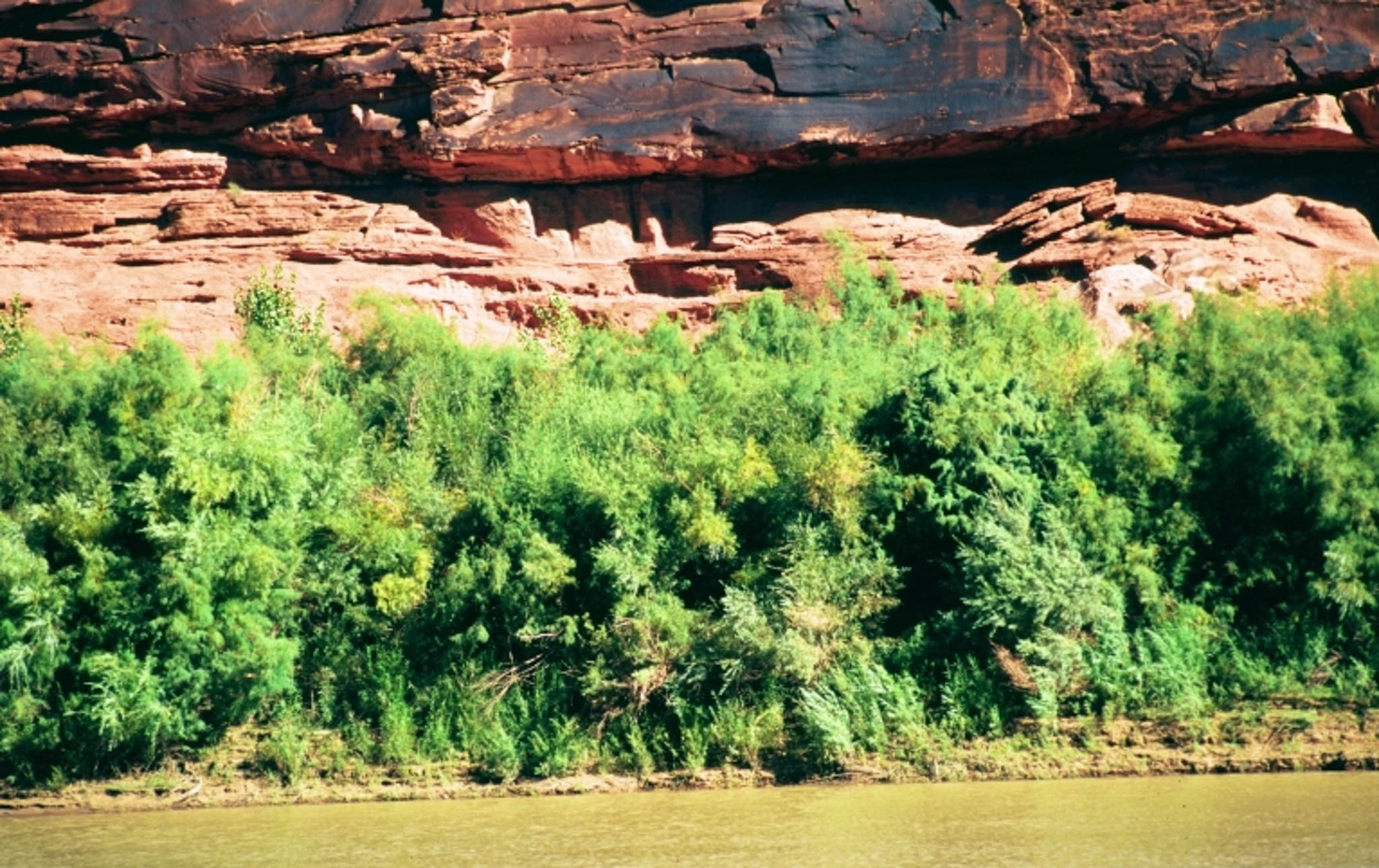
Increasing fire frequency and severity
- The dense tamarisk thickets are more fire-prone due to more continuous plant material as fuel
- Native trees and shrubs in riparian areas recover more slowly post-fire, so tamarisk re-sprouts and recolonizes in another dense monoculture stand
- Tamarisk leaves are more flammable compared to native tree and shrub leaves
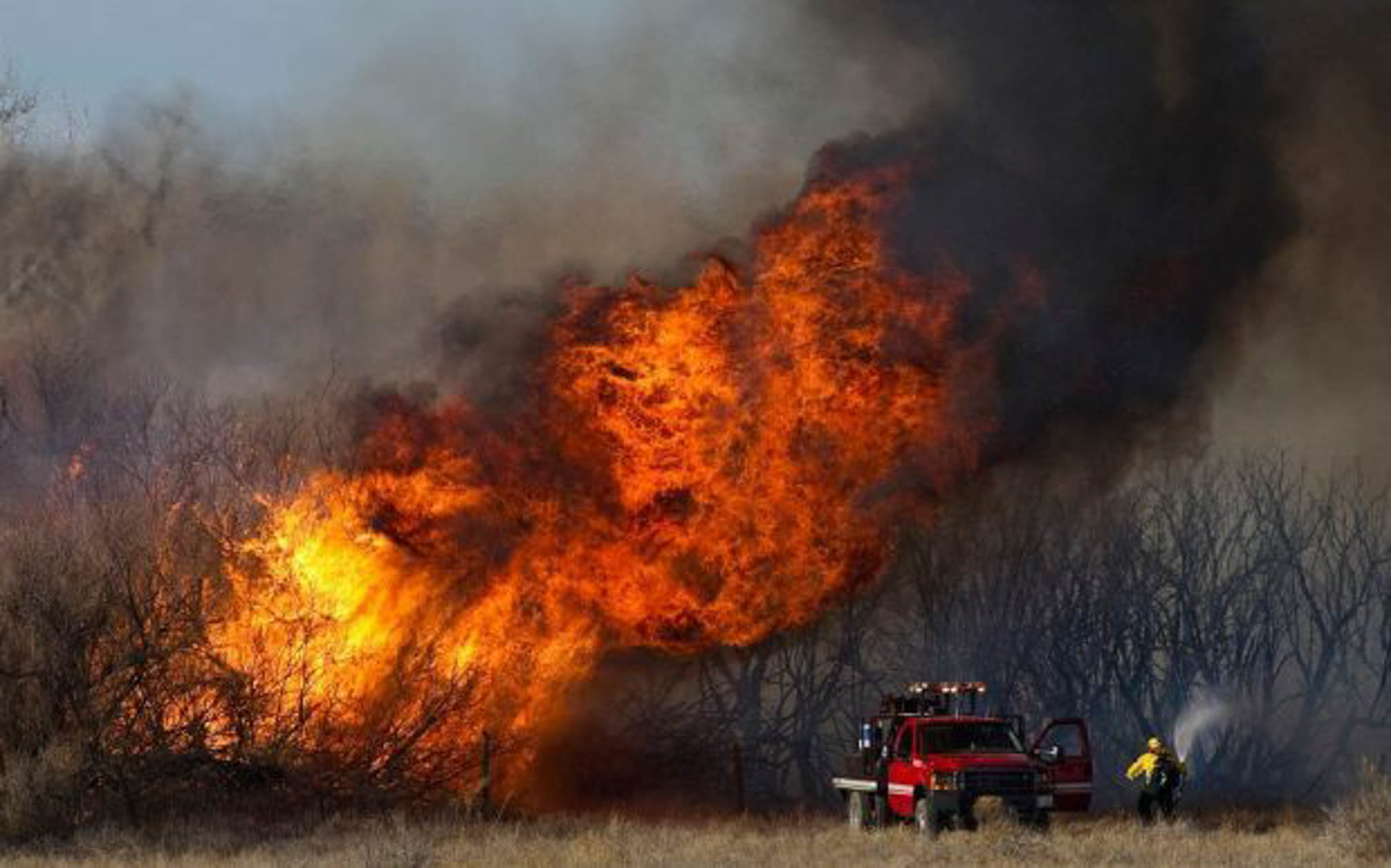
Decreasing diversity and complexity in riparian systems
- When tamarisk is the only species making up the vegetation in a river corridor, the habitat becomes one-dimensional and lacks diversity for all organisms
Degrading wildlife habitat
- With a simplified vegetation makeup, the food web associated with that vegetation is also simplified, leading to a decrease in wildlife habitat quality
Channelizing banks
- Tamarisk colonizes in tight thickets and armors riverbanks that would normally participate in erosion and deposition events
- Erosion occurs on the riverbed instead of the banks, which drops the river level and lowers the level of water in the floodplain (also referred to as incising)
- As a result, the surrounding vegetation changes from wetlands and meadows to dry shrublands
Identifying Characteristics of Tamarisk:
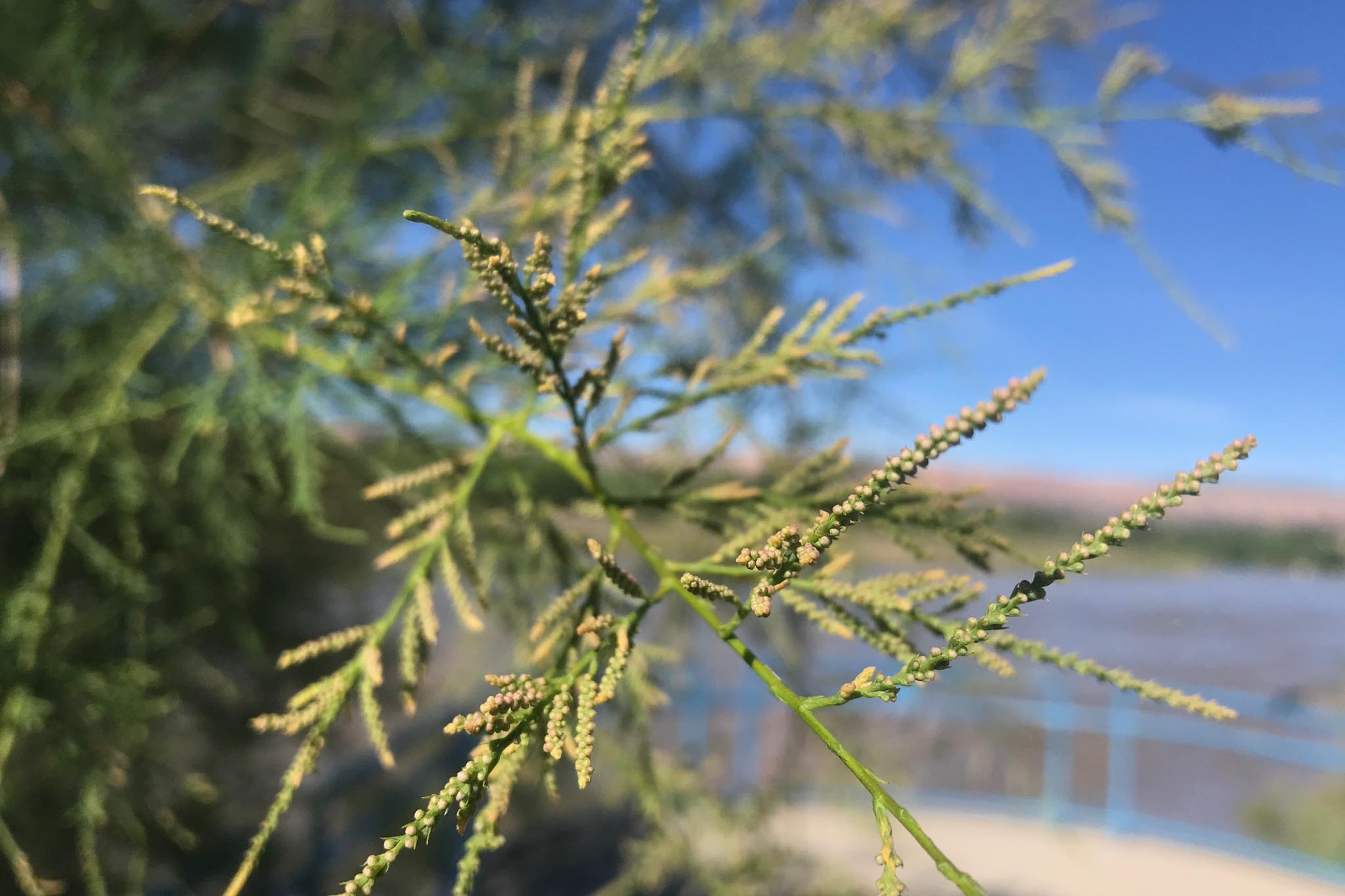
Leaves: Tamarisk leaves are very small, tapering to a point, and strongly overlap each other. The leaves are deciduous and drop every fall. Leaves contain salt glands that collect and secrete salts.
Stems: Tamarisk is a multi-stemmed small tree/large shrub. Branches are reddish in color and have triangular buds along the young stems. Cut stems will vigorously resprout.
Flowers: Flowers are found on the ends of branches and are clusters of small pink or white.
Seeds: Seeds are housed in a small capsule fruit, and are very small and hairy. Mature trees can produce up to 500,000 seeds per year. These seeds are dispersed primarily by wind and water, and typically germinate within 24 hours of contact with water.
Roots: Strong taproots grow upwards of 15 feet down. Once in contact with the water table, lateral roots branch and extend several feet outwards.
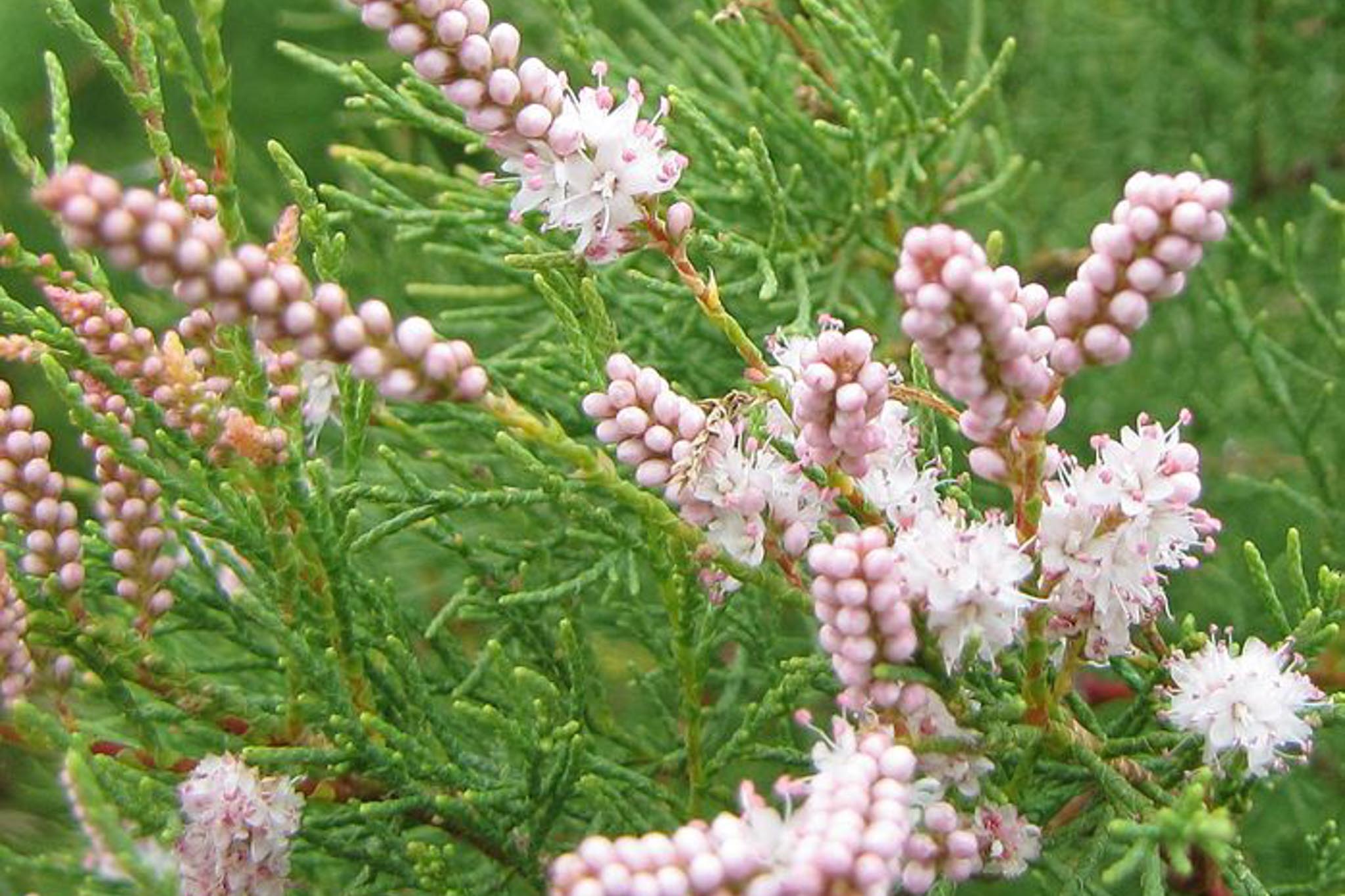
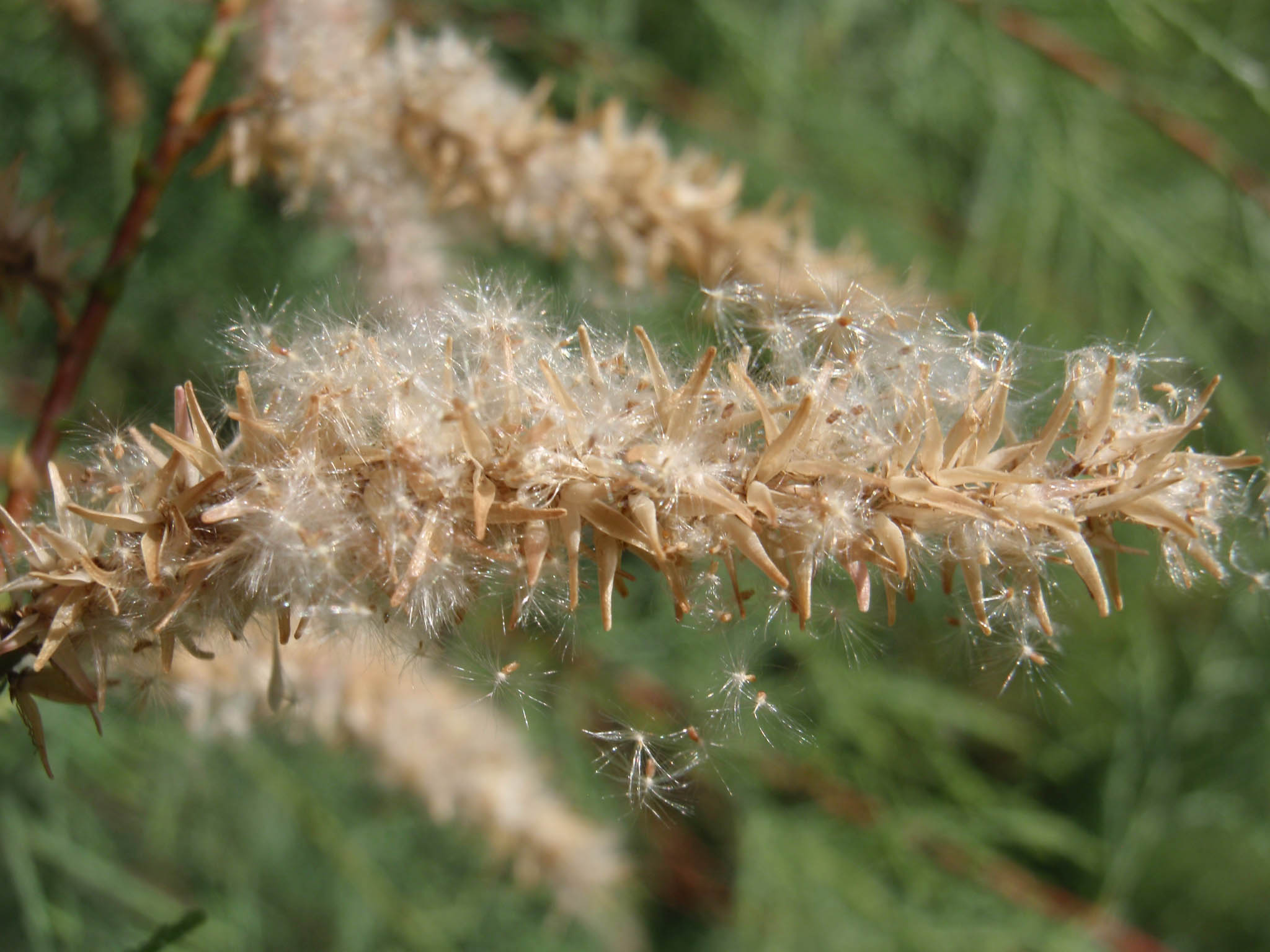
Origin
Traditional tamarisk habitat is along streambanks, rivers, ponds, and wetland margins. Tamarisk can also be found along open irrigation ditches, irrigation-related emergent wetlands, springs, and washes. Over-irrigated pastures and hayfields can also become habitat for tamarisk.
The origins of tamarisk are from southern Europe, eastern Asia, India, and the Middle East. Tamarisk first came to the United States as an imported landscape plant. They were originally sought-after trees for their salt and drought tolerance, easy propagation, and bank-stabilizing qualities. Land managers treated this plant as a silver bullet for all their vegetation-establishment problems. However, soon after plantings, tamarisk began to spread uncontrollably in rivers and drainages of the American West. All the qualities that were originally touted as ecosystem benefits made this tree a strong competitor for establishment in river systems. Altered hydrology has further allowed tamarisk to thrive.
Long-term Outlook
Today, tamarisk is listed as an invasive species in at least nine western states and has established itself so readily that it is displacing native plant species.
The management of tamarisk and other invasive species requires a long-term commitment of time and resources. With proper management, in combination with restoration measures (e.g. revegetating with native plants), we can return riverside habitats to a more diverse and functional ecosystem.

